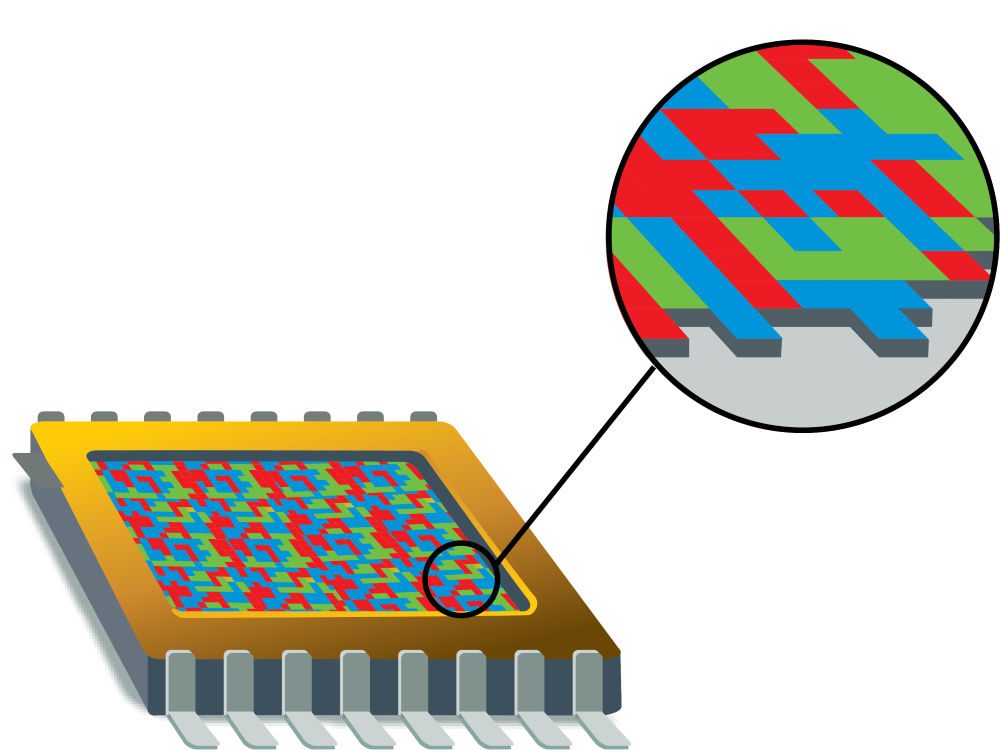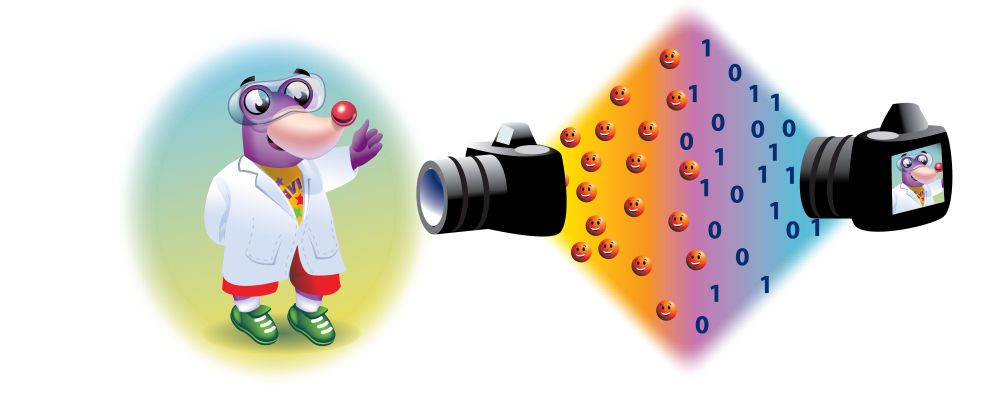By Oksana Love, Ph.D. and Robin Tanke, Ph.D
Most ways of collecting images are based on the contact of light with materials. Film cameras catch images on light sensitive film that is developed into pictures using special processes. Digital cameras use a light sensitive detector or sensor instead of film, and this allows you to see your picture instantly. It is not magic…it’s science!
How does it work? Light from an object makes its way to a sensor (see figure 1) in a camera. On the sensor there are millions of cells called photocells. Each photocell takes one bit of information about the entire picture. Each photocell is like a tile in a mosaic (see figure 2) with each tile or photocell capturing one piece of the picture. The more photocells a camera has, the more detail can be captured in the picture.


When the light reflecting off an object or image reaches a photocell, electrons are freed or let off. If the amount of light that reaches the photocell increases, the number of freed electrons increases. The number of freed electrons is measured and changed into the digital codes of “ones” and “zeroes.” This information is shown on your camera screen as an image.
It may be surprising, but photocells only capture brightness, not color. For this reason, this process only makes black and white images. So how do we get colorful pictures?
Colors in a photographic, or camera image, are usually based on the three primary colors: red, green, and blue. Filters of the colors are placed on different photocells. Some photocells would have red filters on them, some green, and some blue. Each pixel, or smallest part of an image, has only one-color filter, so it can only show one color. If we combine all the colors from each pixel, they mix together, and the picture isn’t very clear. So how do we get perfectly clear and colorful pictures? Believe it or not, there is a computer in your camera!
A computer program in your camera does the calculations to guess what color and brightness should be in each part of the image. Millions of calculations happen in just a few seconds after you press the button to take a picture. The better the calculations, the better the picture.
Today, we use smart phone cameras to take pictures. Thanks to the amazing way technology has helped us to capture light and turn it into a photo.
Oksana Love, Ph.D. is an Assistant Professor at University of North Carolina- Asheville and Robin Tanke, Ph.D. is a Professor of Chemistry at University of Wisconsin- Stevens Point.


